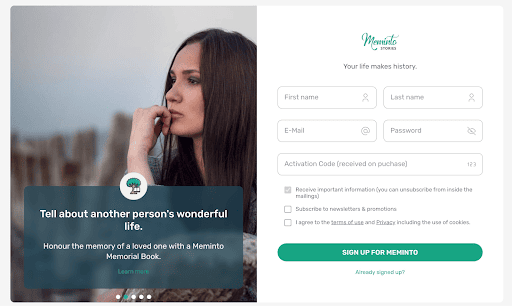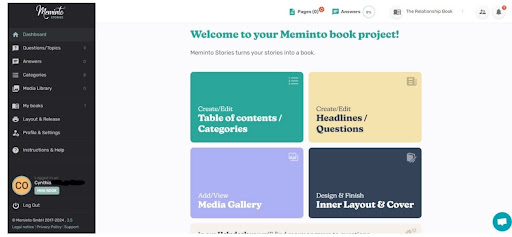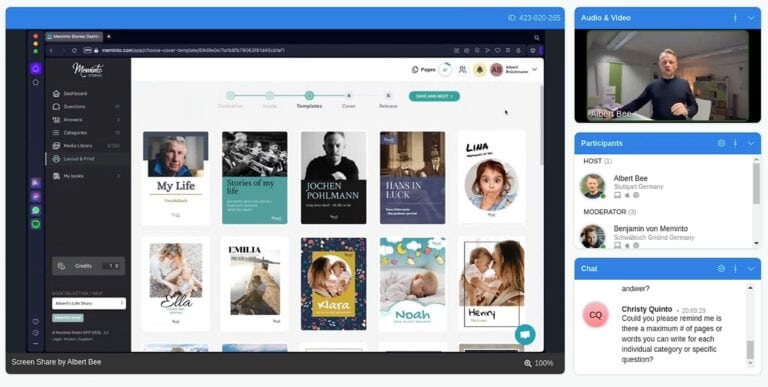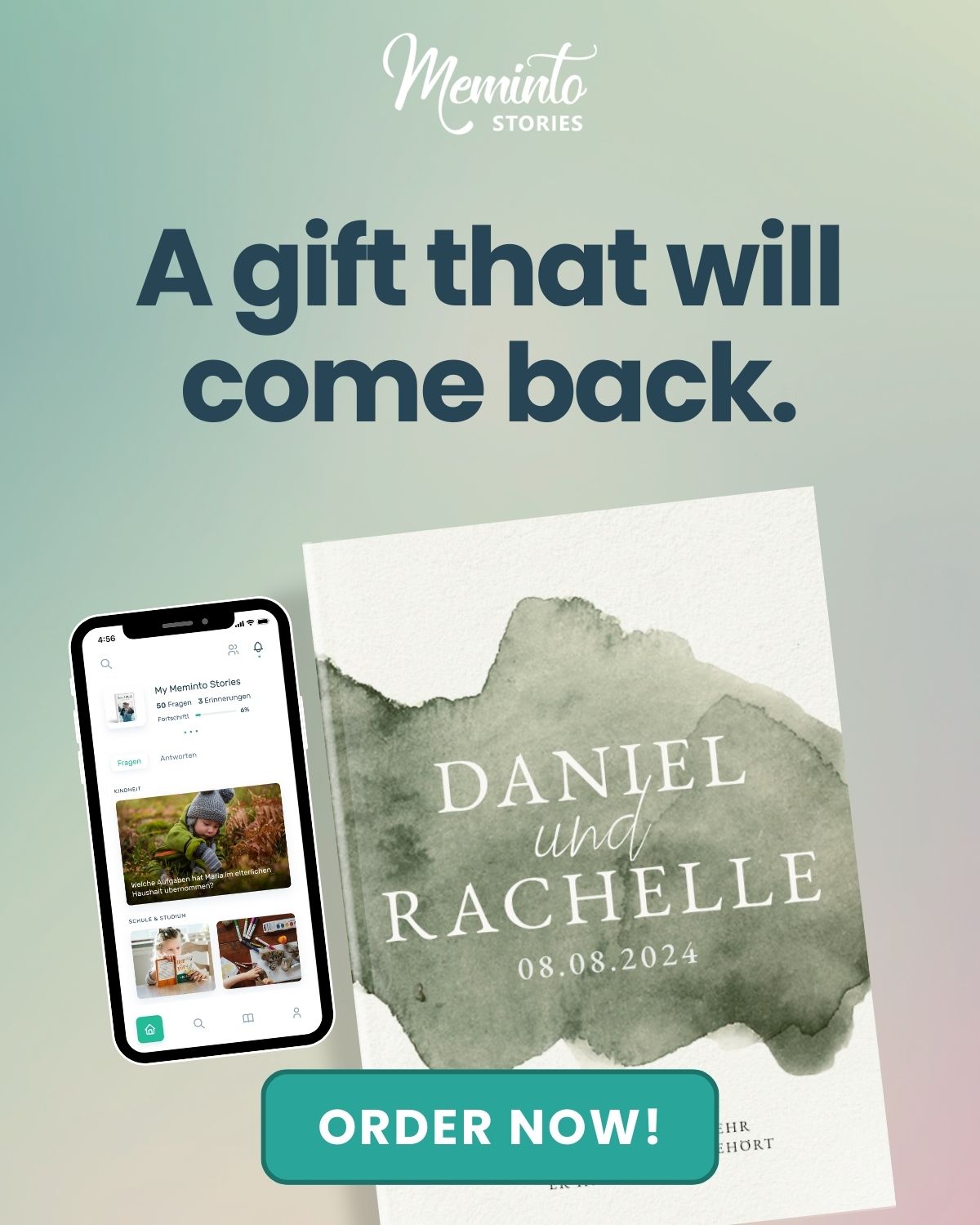Ever wish you had one place to organize everything, from your schedule to your personal goals and even your creative ideas? Bullet journaling gives you an avenue to do all that. With just a notebook and pen, you can create an entire system that’s totally tailored to you.
Whether you’re looking to get organized, track your habits, or add a touch of mindfulness to your days, this guide will walk you through every step of the process to start a bullet journal. Ready to get organized, stay inspired, and create a system that’s all yours? Let’s jump right in!
Key Takeaways
- Bullet journaling is a customizable system that helps organize your tasks, goals, and reflections in one place.
- Essential tools include a notebook and a pen; additional supplies are optional as you develop your style.
- Key elements of a bullet journal often include an index, a future log for long-term plans, a monthly log for an overview, and daily logs for tasks and notes.
- Popular layouts to personalize your journal include mood and habit trackers, gratitude logs, and creative weekly spreads that make planning enjoyable.
- To make journaling a habit, try setting a consistent time, starting small, and keeping layouts simple until you find what works.
- For preserving meaningful life stories and memories, consider using Meminto to create memory books that capture moments in a lasting format.
What is a Bullet Journal?
A bullet journal is a customizable system that combines organization, creativity, and mindfulness into one simple notebook. Developed by Ryder Carroll, it was designed as a solution to endless to-do lists, scattered notes, and multiple planners.
Instead of flipping through different places to find tasks, events, and ideas, a bullet journal keeps everything together in an organized yet flexible way.

The beauty of a bullet journal lies in its structure, or lack of it. Rather than relying on pre-made templates, you create sections based on your needs.
A typical bullet journal includes elements like a future log (for big-picture planning), monthly and daily logs (to track tasks and events), and collections (dedicated pages for goals, notes, or habits). This setup keeps everything organized, while the layout is completely up to you.
Ultimately, bullet journaling offers a blend of function and creativity. Whether you prefer a minimalistic style or something more artistic, it’s a tool you can personalize to fit your life, making it a powerful resource for anyone looking to stay organized and inspired.
What are the Essentials You’ll Need to Start Bullet Journaling?
Starting a bullet journal is refreshingly simple! At its core, all you need is a notebook, a pen, and a bit of imagination. Here’s a breakdown of the essentials to get started:
- Notebook – The type of notebook you choose can impact your journaling experience. Many people prefer dotted notebooks for bullet journaling since the dots guide your layouts without being too intrusive. Look for a notebook with durable pages that won’t bleed through if you’re planning to use markers or heavier pens.
- Pen – A good pen makes all the difference. A simple black pen works for most setups, but if you enjoy color-coding or adding flair, consider a few colored pens or markers.
- Optional Add-Ons – While you don’t need anything extra to start, some tools can make the process more fun. Washi tape, stickers, and highlighters can add color and creativity, while rulers and stencils are handy for making precise lines and shapes.
With just these essentials, you’re ready to dive into bullet journaling and make it your own!

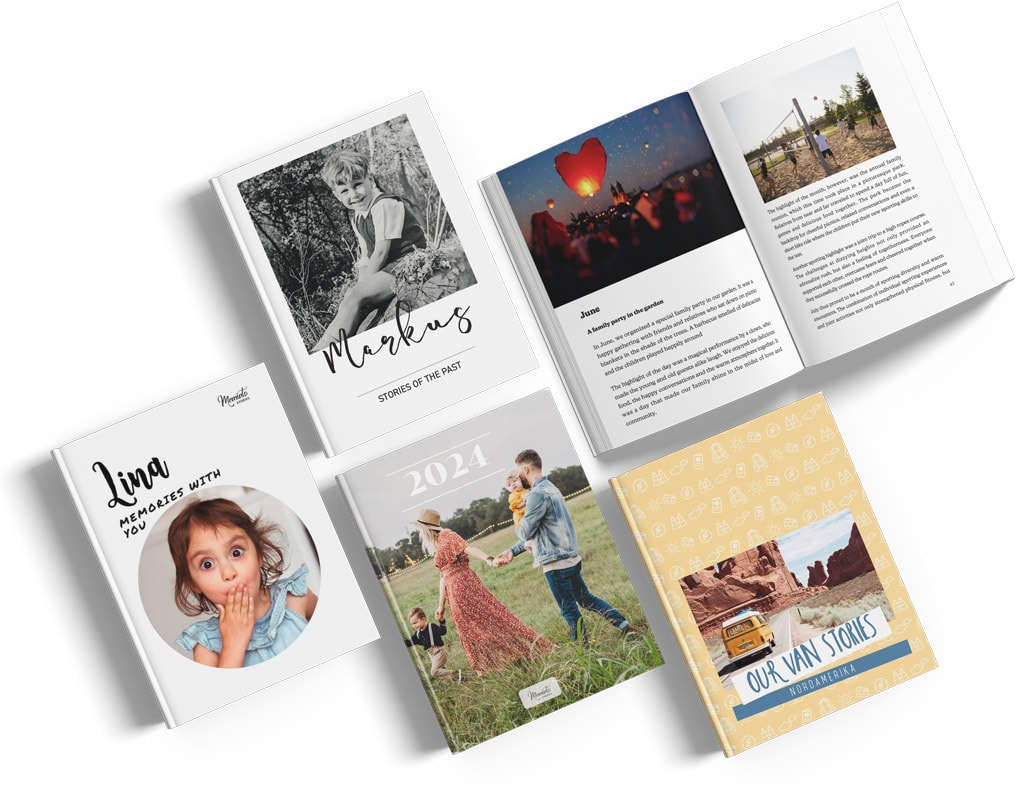
What are the Key Elements of a Bullet Journal?
Bullet journals follow a few core elements that create a solid structure while allowing for flexibility. Here are the essential sections:
- Index
The index is like a table of contents for your bullet journal. It’s usually found on the first few pages and helps you quickly locate important sections, notes, and collections. Each time you add a new entry or section, you list it here with a page number. This makes it easy to keep track of where everything is, so you don’t lose important ideas in a sea of pages. With an index, you’ll have a way to keep your journal organized, even as it grows. - Future Log
The future log is a high-level calendar view, ideal for noting major events, goals, or deadlines that extend beyond the current month. Here, you can jot down events like birthdays, holidays, project milestones, or big-picture goals. Divided into months, it offers a snapshot of what’s coming up so you can keep long-term priorities on your radar. The future log acts as a roadmap, giving you a clear direction without the need for a separate planner. - Monthly Log
Your monthly log serves as a planning page for each month, giving you a space to map out upcoming events, tasks, and goals. Typically, this section is split into a calendar view on one side and a task list on the other, but you can design it to fit your style. The monthly log is a great place to assess what needs to get done, set intentions, and check on recurring tasks. It brings structure to your month and allows you to see both your commitments and personal goals at a glance. - Daily Log
The daily log is where bullet journaling becomes a true daily tool, allowing you to break down your tasks, notes, and reminders for each day. Here, you can use the classic bullet system with symbols like dots (for tasks), circles (for events), and dashes (for notes). It’s a flexible setup—you can adjust the space each day based on your needs, whether that’s a busy weekday or a relaxed weekend. The daily log helps you stay focused and productive, allowing you to prioritize tasks without overwhelming your day. - Collections
Collections are personalized pages where you can track specific areas of your life. Think of these as dedicated sections for things like habit trackers, goal-setting pages, meal plans, or reading lists. They’re completely customizable, so you can create collections that matter to you. If you’re trying to establish a new habit, for example, a habit tracker collection can help you monitor progress and stay motivated. Collections add a creative dimension to bullet journaling, allowing you to design pages that make tracking and achieving goals more enjoyable. - Rapid Logging Symbols
Bullet journaling uses a simple system of symbols to quickly identify the type of entry, helping you stay organized without lots of writing. Common symbols include a bullet point for tasks, an open circle for events, and a dash for notes. This system is called rapid logging, and it’s designed to keep things quick and efficient. You can also use additional symbols, like stars to mark important tasks or arrows to show tasks moved to another day. Rapid logging lets you glance at your entries and know what’s planned without much thought.
These elements form the foundation of a bullet journal, bringing both structure and flexibility to your day-to-day life.
Some Popular Bullet Journal Ideas and Layouts
Bullet journaling is all about creativity, so no two journals are ever the same! Once you’ve got the basics down, adding custom layouts and collections is where the fun begins. These layouts let you design pages that serve your goals, track progress, and bring some personality to your planning. From habit tracking to meal planning, here are ten popular bullet journal ideas to help you get inspired and make your journal truly yours.
1. Habit Tracker
A habit tracker is a dedicated layout that helps you monitor habits or activities you want to maintain consistently. You start by listing habits, like drinking eight glasses of water, reading for 20 minutes, or meditating, that you want to track over a set period, typically a month.
The layout usually includes a grid or table with each habit listed down the side and dates across the top. As you complete each habit daily, you fill in the corresponding box or mark it with a check, color, or symbol.Habit trackers are excellent for building routines and bringing awareness to your daily habits.
They can help reveal patterns, like if you’re more consistent with a habit on weekdays or if some habits need adjustments. The visual progress of checking off boxes can be incredibly motivating, too! Plus, it’s an adaptable layout. You can add or remove habits anytime to keep it aligned with your evolving goals.
2. Mood Tracker
A mood tracker is a colorful, interactive way to document your emotions day by day. Often organized in a calendar format, it features small boxes or circles for each day of the month, where you fill in a color representing your mood. For example, blue could signify a calm day, yellow a happy one, and red a stressed or challenging day. Over the month, you’ll see a rainbow of colors reflecting your emotional journey.
Mood trackers offer more than just pretty colors. By recording daily moods, you gain insights into how external factors, routines, or personal relationships may influence your emotions. This type of tracking can help identify recurring patterns like if you often feel energized after social events or need downtime after busy weeks.
For anyone focused on mental health, mood trackers serve as a gentle reminder to check in with yourself, making it easier to recognize and address shifts in your emotional well-being.
3. Goal-Setting Pages
Goal-setting pages are an ideal way to break down larger dreams into manageable, actionable steps. Begin by setting a few big-picture goals, these can be yearly, quarterly, or monthly goals. Then, outline smaller, specific tasks or milestones to move you closer to each goal. Adding progress bars, timelines, or numbered checklists can make these pages more dynamic and structured.
This layout transforms abstract goals into concrete plans. For example, if your goal is to read 20 books in a year, you could set monthly reading goals and track progress toward them. The page can also include spaces to reflect on progress, re-assess timelines, or celebrate milestones.
Goal-setting pages in a bullet journal are highly adaptable; whether you’re focused on fitness, career, personal development, or hobbies, this layout keeps you accountable while letting you enjoy each small win along the journey.
4. Brain Dump Pages
Brain dump pages are freeform, unstructured sections where you can release all thoughts, ideas, and mental clutter. This can include anything from to-do lists and project ideas to random thoughts and doodles. The idea is to capture everything on your mind, with no need for organization or perfection. A brain dump page can be weekly, monthly, or whenever you feel overwhelmed.
These pages are especially helpful when you’re juggling multiple responsibilities or feel creatively stuck. Writing down everything that comes to mind clears mental space and reduces stress. Plus, by freeing your brain from minor concerns, you can focus better on essential tasks.
Brain dump pages can later serve as a reference for new ideas, reminders, or tasks that you want to revisit. They’re also great for sparking creativity since the open, pressure-free format encourages unfiltered thoughts and allows for spontaneous ideas.
5. Weekly Spread
A weekly spread organizes each week into manageable sections, providing an overview of upcoming tasks, events, and goals. This layout typically divides each page into sections for each day, with additional spaces for weekly priorities, to-do lists, and reminders. It’s a go-to choice for those with busy schedules, as it combines structure and flexibility in one view.
With a weekly spread, you can set your intentions for each day while tracking your overall goals. It’s customizable; you can add trackers, habit reminders, or even meal plans to keep everything aligned. Many people add small decorations, like motivational quotes or drawings, to make it visually engaging.
Whether you’re balancing work, school, family, or personal projects, a weekly spread makes planning less overwhelming and more focused. It’s the perfect mix of structure and creativity to keep you motivated and on top of your goals.
6. Gratitude Log
A gratitude log is a daily journal section dedicated to noting things you’re grateful for. Each day, you write down one or more things that brought joy, comfort, or meaning. Over time, this log becomes a source of positivity, reminding you of life’s little blessings. You can keep it simple with short phrases or elaborate with drawings, colors, and other embellishments.
Keeping a gratitude log helps cultivate a more positive mindset by shifting focus to what’s going well. Studies show that practicing gratitude regularly can improve mental health, reduce stress, and increase happiness. It’s also a simple but powerful way to close each day on a positive note, reflecting on the small moments that matter.
Plus, on tough days, looking back at past entries can serve as a comforting reminder of brighter times. A gratitude log is a quick yet meaningful addition to any bullet journal.
7. Budget Tracker
A budget tracker is a layout dedicated to managing finances, tracking income, expenses, and savings. You can divide it into categories like groceries, bills, entertainment, and set budgets for each. Some people create visual aids like bar graphs or pie charts to represent spending, while others use simple lists or tables for a clean look.
Having a budget tracker is especially helpful for anyone working toward financial goals, whether saving for a big purchase, managing debt, or building an emergency fund. This layout makes spending habits visible, which helps you identify areas where you can cut back.
Over time, a budget tracker encourages mindful spending and makes it easier to stay within limits. It’s a powerful tool for financial planning and can make budgeting a more intentional, even rewarding, part of your routine.
8. Meal Planner
A meal planner is a layout where you organize weekly or monthly meals, track recipes, and even list grocery needs. It often includes sections for breakfast, lunch, dinner, and snacks, making it easier to plan balanced meals. Some people also use it to track dietary goals, like reducing sugar or eating more vegetables.
A meal planner can save time, reduce decision fatigue, and help you stick to health or budget goals. Planning meals ahead also reduces food waste, as you buy only what you need. Plus, it can be a lifesaver for those with busy schedules, as it eliminates the need to scramble for meal ideas.
Meal planning is also an opportunity for creativity, allowing you to try new recipes, prep meals in advance, and build a sustainable, nourishing food routine.
9. Reading List
A reading list is perfect for book enthusiasts. This layout lets you track books you’ve read, want to read, and even rate or review each one. You can set up categories for fiction, non-fiction, or specific genres, making it a personalized library within your journal.
This layout is especially satisfying for avid readers, as it gives a sense of accomplishment and organization. It’s also helpful for setting reading goals, like finishing a certain number of books each year. You can add reflections on each book or highlight quotes that resonated with you, creating a meaningful literary record.
A reading list page encourages you to keep reading, explore new genres, and track your growth as a reader.
10. Travel Log
A travel log captures the memories and highlights of each trip, helping you remember details about each destination. This layout typically includes places visited, activities, and favorite experiences. Some people add maps, photos, or even ticket stubs to make it feel like a scrapbook.
A travel log is a fantastic keepsake that captures the essence of your adventures, big or small. It’s a fun way to relieve trips and record the unique experiences and people you encountered.
This layout can also help with planning future trips, as you can note down tips, recommendations, and places you’d like to revisit. A travel log brings your journeys to life, creating a tangible memory that lets you take a trip down memory lane whenever you open your journal.
With these ideas, your bullet journal can be as functional, creative, and personalized as you want. Whether you’re tracking habits or capturing memories, each layout is an opportunity to build a system that works just for you.
Making Bullet Journaling a Habit
Starting a bullet journal is exciting, but making it a consistent part of your routine requires a little planning. Here’s how to turn bullet journaling into a lasting habit:
- Set a Dedicated Time: Decide when bullet journaling fits best in your day. Some people enjoy journaling in the morning to plan their day, while others prefer to reflect in the evening. Find a time that feels natural, and stick to it daily, even if it’s just five minutes.
- Start Small: Avoid overwhelming yourself with complex layouts right away. Begin with simple entries like a daily to-do list or a quick mood tracker. As you get comfortable, you can start adding habit trackers, weekly spreads, or more intricate designs.
- Create Accountability: Having an accountability system can help you stay consistent. This could be a friend who journals with you, an online community, or setting reminders on your phone. Some people also enjoy posting their pages on social media to stay motivated and inspired.
- Prioritize Progress Over Perfection: Bullet journaling should be enjoyable, so don’t worry about making each page look flawless. Focus on getting your thoughts down rather than creating perfect designs. Remember, the goal is to make the journal a functional, personal tool.
- Use it as a Tool for Self-Reflection: Making time to review past entries weekly or monthly adds meaning to the practice. Reflecting on your tracked habits, moods, or completed goals can be rewarding and motivate you to keep going.
- Reward Yourself for Consistency: Finally, celebrate the milestones you reach with your bullet journal. It could be as simple as treating yourself to new stationery or taking a photo of a favorite page. Rewards create positive reinforcement, helping you associate bullet journaling with enjoyment.
Bullet journaling is most effective when it’s part of your daily rhythm. With these tips, you’ll not only build consistency but also create a journaling practice that feels fulfilling and naturally blends into your lifestyle.
Tips for Beginners in Bullet Journaling
Here are some beginner-friendly tips to help you ease into the process and enjoy the journey:
- Start Simple: Stick to basic layouts, like to-do lists or habit trackers, before trying more complex designs.
- Minimal Supplies: Begin with just a pen and notebook; add other supplies as you discover your style.
- Try Different Layouts: Test a few layouts for tasks, tracking, or goals to find what suits you best.
- Limit Trackers: Choose two or three things to track initially to keep the process manageable.
- Embrace Imperfections: Don’t worry about mistakes; a messy page is still progress.
- Seek Inspiration, Don’t Compare: Look for ideas online, but let your journal reflect your personality.
- Focus on Consistency: Regular, short entries will build your habit more effectively than complex setups.
- Enjoy the Process: Let your journal be a mix of productivity and creativity: doodle, color, and have fun!
These tips will help you enjoy bullet journaling while making it uniquely yours.
Capture Life’s Moments Beyond the Journal with Meminto
If you’re drawn to capturing life’s moments, Meminto offers a beautiful way to preserve your stories in memory books and life books. With Meminto, you can document personal stories, family memories, and meaningful experiences, creating a unique keepsake that holds a lifetime of memories.
Meminto provides guided prompts to help you easily record significant moments and milestones, along with adding photos and notes. This thoughtful approach makes it simple to reflect on your life story, capturing details that might otherwise be forgotten.
Unlike daily planners or journals, Meminto’s memory books are designed to be a lasting record of the moments and stories that define your life. It’s an ideal way to create a keepsake that can be shared with loved ones, making sure that your life’s meaningful memories are documented and celebrated.
How to use Meminto to create a memory book
- Go to https://meminto.com/product/life-book/Click on “Start Now” to begin creating your journal.
- Select who will author the book by choosing either “I Will” or “Someone Else Will.”
- Choose the number of pages and input any other options you prefer. This will generate your total, then click “Add to Cart.”
- Type in your shipping details and select how you’d like to pay. If you have a promo code, apply it to get a discount.
- Review and Confirm your order, then track your delivery status from the checkout page.
- Go to your Email for confirmation and activation code, then visit memin.to/register.
- Enter your personal information, activation code, and password. Click “Sign up for Meminto” to start writing your story.
Personal details - Choose your language preference between English and German, then set the day you’d like to receive memory prompts.
- Personalize your memory book by choosing your design preferences.
- Customize the book to fit your needs.
11. Watch the instructional video below so you can get better guidance on how you can use the Meminto app.
You are currently viewing a placeholder content from YouTube. To access the actual content, click the button below. Please note that doing so will share data with third-party providers.
More Information
Wrapping Up!
Bullet journaling is more than just a productivity tool. It’s a creative outlet, a reflection space, and a way to organize every aspect of your life. Whether you’re using it for planning, goal setting, or simply capturing daily moments, your bullet journal is unique to you and evolves over time.
With the essentials, some inspiring ideas, and a few helpful tips, you’re ready to build a journaling practice that feels personal and fulfilling.
If you’re looking to capture life’s bigger moments and stories, tools like Meminto can add an extra layer, turning memories into keepsakes you’ll cherish. Happy journaling!








